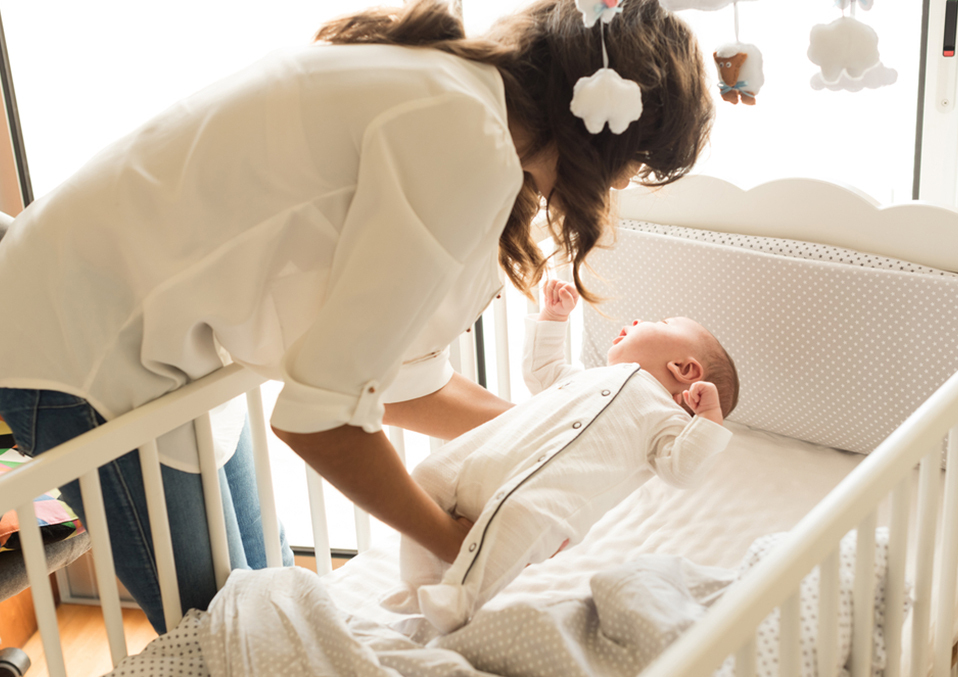Newborn won’t sleep on the back one of the most important ways to prevent sudden infant death syndrome (SIDS) is to sleep on his or her back from the moment he or she is born. If you have any questions, please feel free to contact us.
In fact, most children seem to prefer sleeping upside down, and some are more likely to get scared and unfortunately because they feel cozier and safer on the mattress, no matter how quiet the baby is. Here are some tips to encourage him or her why it is so important for your child to sleep on his or her back.
Why Is It Dangerous To Lie Upside Down?
Studies show that children sleeping upside down have an increased risk of SMSL. Experts suggest that deep-sleeping children are able to silence your reactions awakening on their stomachs during normal episodes of sleep apnea and normal breathing studies also show that they have fewer episodes of fever, sleeping on the back, fewer problems with nasal congestion and fewer episodes of regurgitation of the stomach.
When Should My Baby Sleep On His Back?

You should start lying on your back from birth and continue to do so until you are 1 year old. The incidence of SIDS is highest during the first 6 months, but the” go back to sleep ” recommendation applies throughout the first year.
Read Also:
How Can I Induce My Child To Fall Asleep On His Back?
If you have complained every time your child lies on his back, talk to your pediatrician. Although this is rare, there are some physical and mental abnormalities that your child may feel uncomfortable sleeping upside down that your doctor should initially rule out.
It is much more likely that your child will feel less safe on his back. If so, there are some things you can try to keep your child from the day he takes home in that position happier.
Wrap The Baby.
wrap it and you can answer the baby to be safe and eager to sleep when you accurately reproduce it. But when it comes to a blanket envelope big enough to throw(for some kids, it only has 2 months), it’s even more likely that your baby’s room will be cool enough to feel comfortable with extra layers (one of the dangers of overheating is overheating).
Helping a pillow or blanket to wrap in the mattress (no risk of SMSL), thanks to the high reliability of the baby feels better and increases safety.
Flowing Positioners.
wedges and blankets are placed on your baby’s mattress where they might require to prevent SIDS, and other Cribs are placed on bedding, pillows, or other soft baby beds.
Make It Easy.
Lie down on the baby to feel more comfortable in his / her back and then train to go to bed.
Keep It.
consistency is key when it comes to any sleep routine. So while it may take some time and persistence, especially if you’ve never known a different sleep position, over time most children will get used to the back position.
To Give a Pacifier.
Try giving your baby a pacifier when she goes to bed at night. If the child is rolling on his stomach or side, it is difficult for him to keep the pacifier in his mouth, so this is a tactic that works well to keep him lying upside down.
What if my baby turns over at night?
If your child dominates tipping (most children can do this for 4-6 months), he or she will be more likely to become a hypochondriac than a specialist because he or she has developed the maturity to move to a safer position, feeling the problem more during this ability the child is also dreaming.
It says when and even if your baby moves at night, you should keep sleeping on your back and let it decide when to turn around.
When a child rides at night
What to expect the editorial team, Heidi Murkoff, the author of what to expect in the first year.
The health information on this site is based on peer-reviewed medical journals and highly respected medical institutions and research institutes, including ACOG(University of obstetrics and gynecology in the United States), CDC(national center for disease control and prevention), and the University of California at Berkeley.
Putting The Baby To Sleep On His Chest
Watching other primates with a baby will immediately reveal where nature wants our baby to sleep. Little fingers and toes cling tightly to the hair on your mother’s chest. Baby gorillas, chimpanzees, and orangutans sleep in the mother’s breast. You can also use this natural position. A child sleeping in the bosom of his parents creates a safe sleeping environment in which the head is above the bottom(that is, at an angle to the father). The breath and movement of the caregiver stimulate the breathing of the child, even when both are asleep. Breast-to-breast sleep has no known risks but has documented benefits. In fact, it is believed that the risk of lying upside down is only the fault of the baby who sleeps too deeply. Also, nature is designed for adults to stimulate the child to avoid this deep sleep.
Taking Baby Steps
If your child falls asleep on his side, he will sleep under your supervision. In case you think he’s asleep, put him on his back. If you get used to it, you can move when you fall asleep instead of waiting for deep sleep. You may have to go step by step: first from the belly to the side, then from side to side.
Let Him Fall Into Deep Sleep Before Putting Him

When the baby falls asleep during a meal, try to sleep deeply before going to bed. Do not rush to move to the bed. Its early sleep is more sleep and easily disturbed. Enjoy cuddling with the baby for about 20 minutes, until the baby moves to a deep and calm sleep cycle. This reduces the risk of waking up and allows you to lie on your back. If you want to put the baby to sleep, then spread the envelope on the bed and prepare it in advance. Then you can gently wrap it while sleeping, and then leave it as it is.
Read Also:
- Why Do Babies Fight During Their Sleep?
- Everything You Need To Know About Having A Twin.
- Your Ultimate Guide To Know How To Switch Baby From Formula To Milk.


